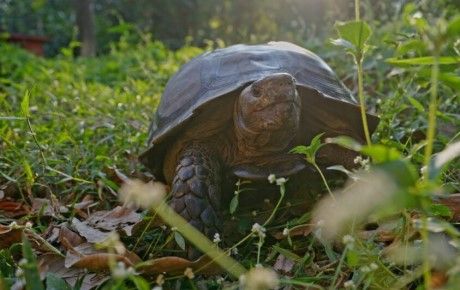Sushmita Kar, one of our conservation insight grant winners at the Turtle Survival Alliance, talks to us about her recent field work expedition in Nagaland, India, searching for released Asian giant tortoises.
Why are we looking for Asian giant tortoises?
Asian giant tortoises are mainland Asia’s largest tortoise and the 6th largest in the world! They live on hillsides in tropical jungles and are critically endangered. They are one of the most primitive tortoises and some of the only tortoises that make a mound of earth for a nest and care for their young. A few state zoos in northeast India have captive Asian giant tortoises in their collection, and these individuals are being used as the founders for conservation breeding programs, to help this species return to the wild.
Bringing back the Asian giant tortoise
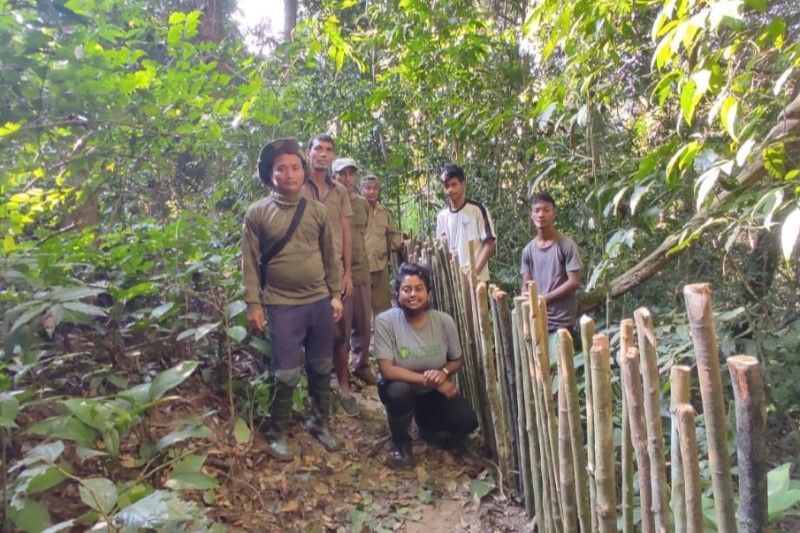
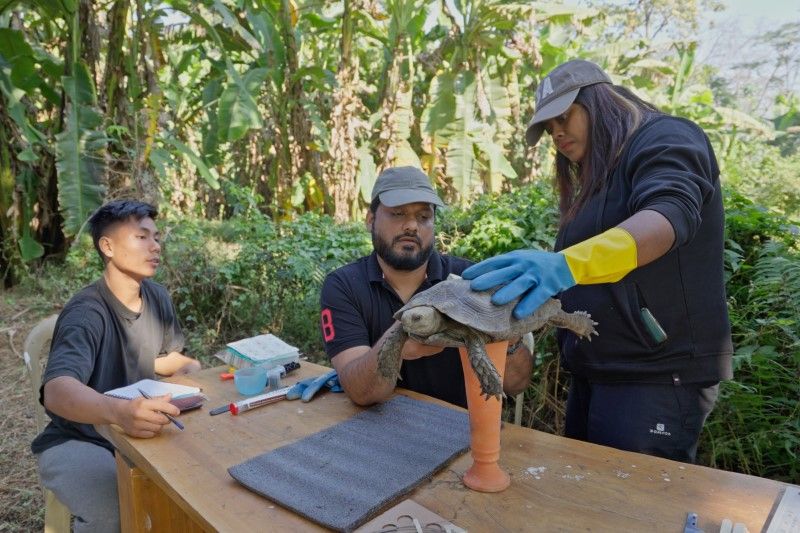
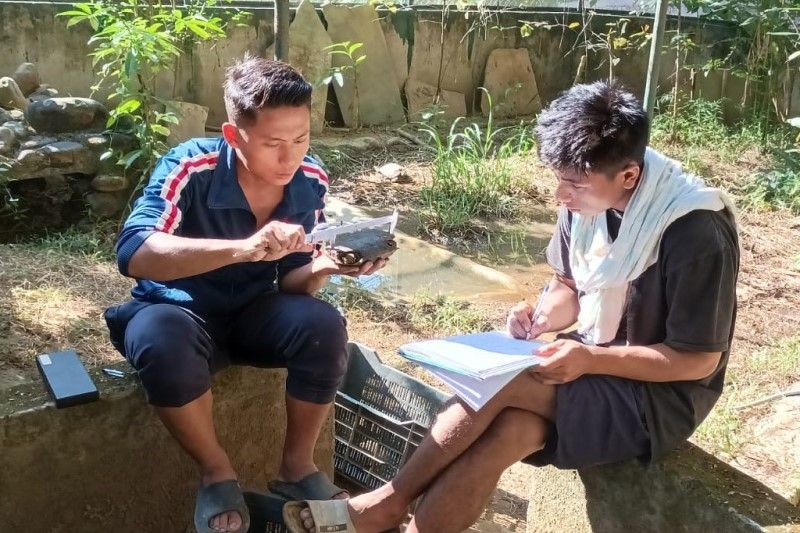
In 2023, in an historic event, ten radio tagged Asian giant tortoises were released in Intanki National Park, in northeast India thanks to the support of PTES and Nagaland Forest Department. Very little to no information is known about Asian giant tortoises’ ecology in the wild as there are so few left. In 2022, only six wild Asian giant tortoises were recorded in the entirety of northeast India. Therefore, it is really importnat to study their ecology in the wild – what they eat, what habitat they prefer, their movement in the habitat and how they survive. This is where we enlist the help of reintroduced tortoises from the breeding programme, tracking them in the wild and learning from their behaviour. The information we collect from them can guide future reintroductions of tortoises and help understand their natural needs so we can ensure we are protecting the correct habitat and plants for them, gradually reviving their populations in the long run.
Into the field
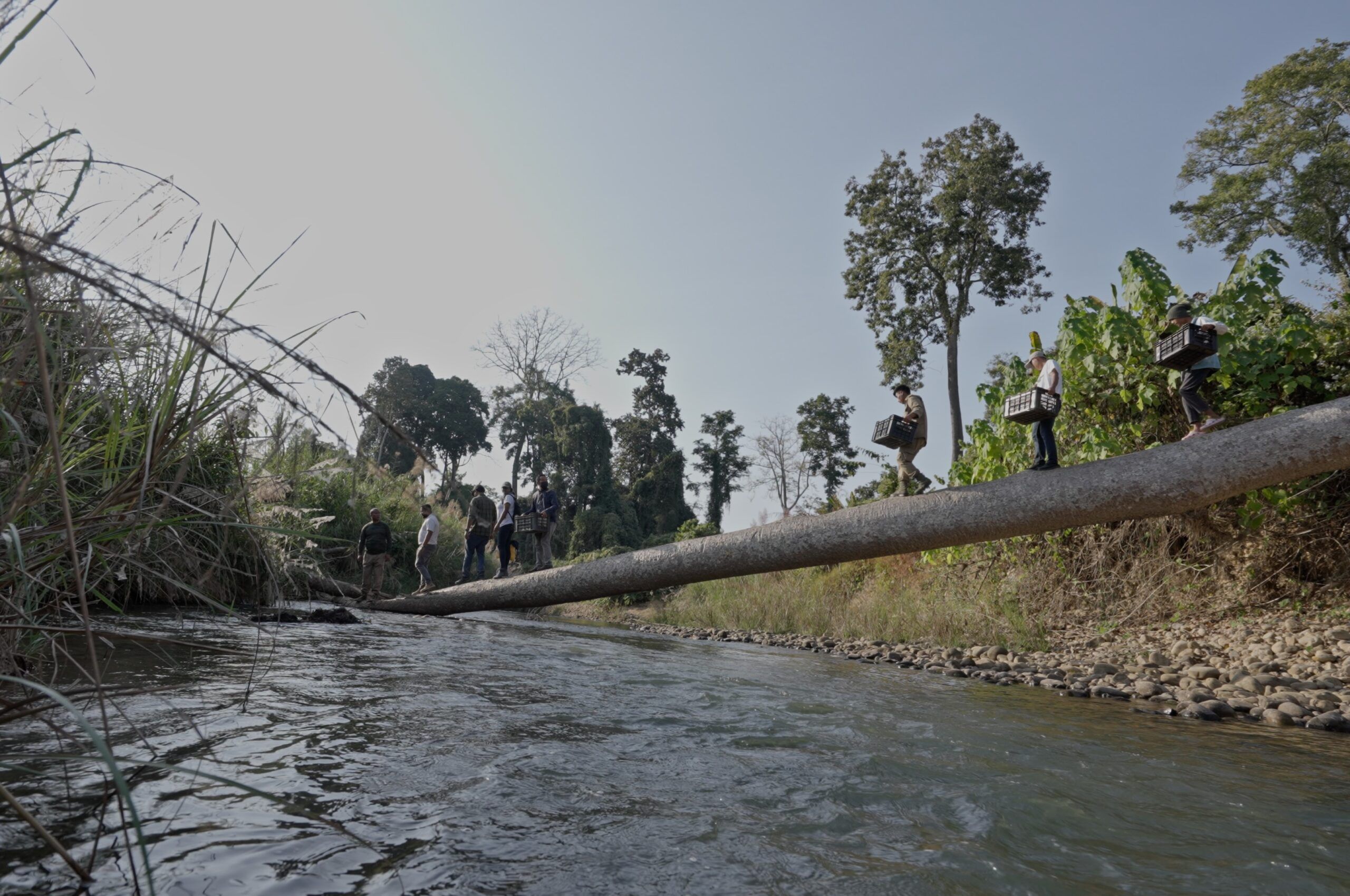
I am based at Nagaland Zoological Park, Dimapur, where I prepare for my field trip. I coordinate with Intanki National Park staff who help me with the logistics of reaching the field site. Starting from Dimapur I drive two hours to the forest protection camp, followed by a further 10 km drive by 4×4 forest vehicle to the campsite. From the campsite, my team and I have to cross the Intanki river to reach the tortoise release site by walking across a fallen tree we use as a bridge. We carry out our fieldwork in the daytime and stay the night at Misapdisa watch tower camp. We stay there for 3-5 days and take in all our food, hiring a local volunteer to assist us in the jungle.
We have a ground team of 3-4 people every field trip, consisting of myself, an intern named Sujeeth Thalwar who loves radio tracking, field assistants from the local community who have great knowledge of the forest, and several staff from the Nagaland Forest department who have been conducting tracking exercises alongside us and providing the best logistical help. So, our dynamic team includes members from the project, the forest department and the local community.
We fit the tortoises with radio trackers with a battery life of 2 years. We can then use an antenna to track them in the jungle and record their movements. We also carry solar lights, torch lights, head torches, a temperature gun, a first aid kit and cooking and camping supplies along with us into the field.
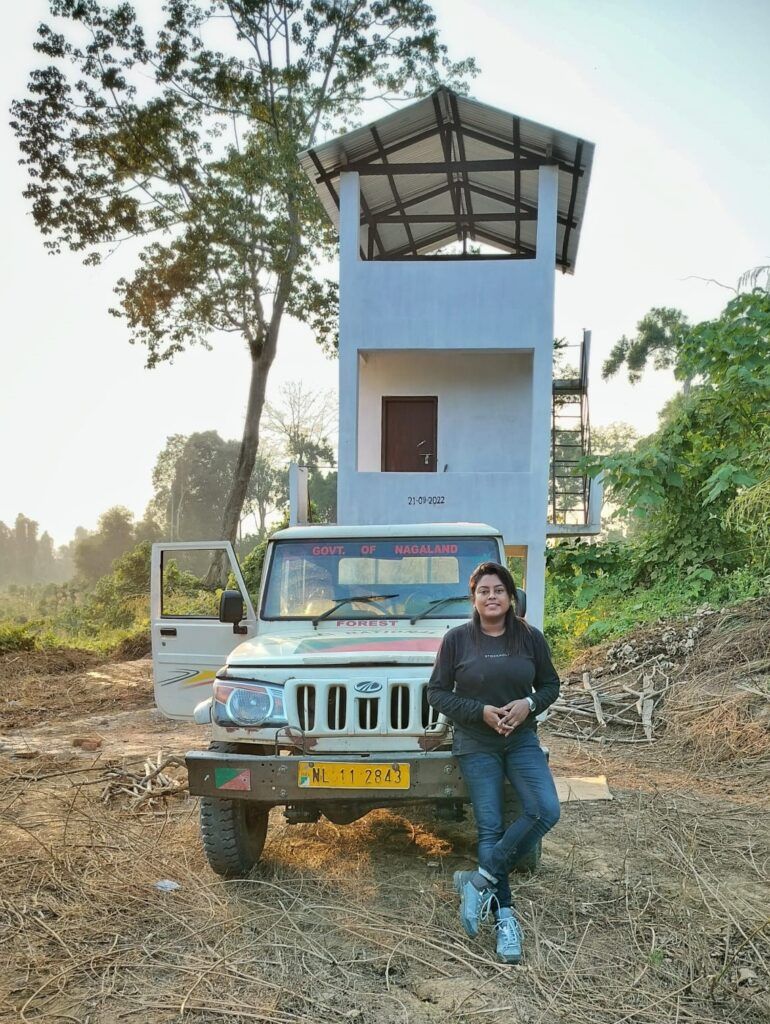
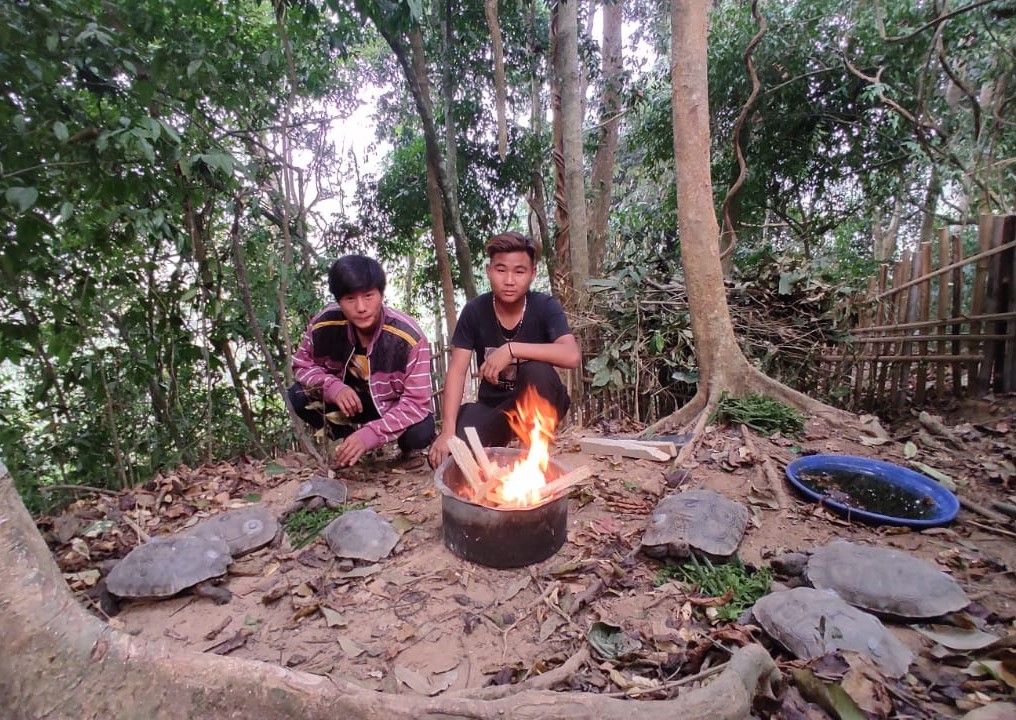
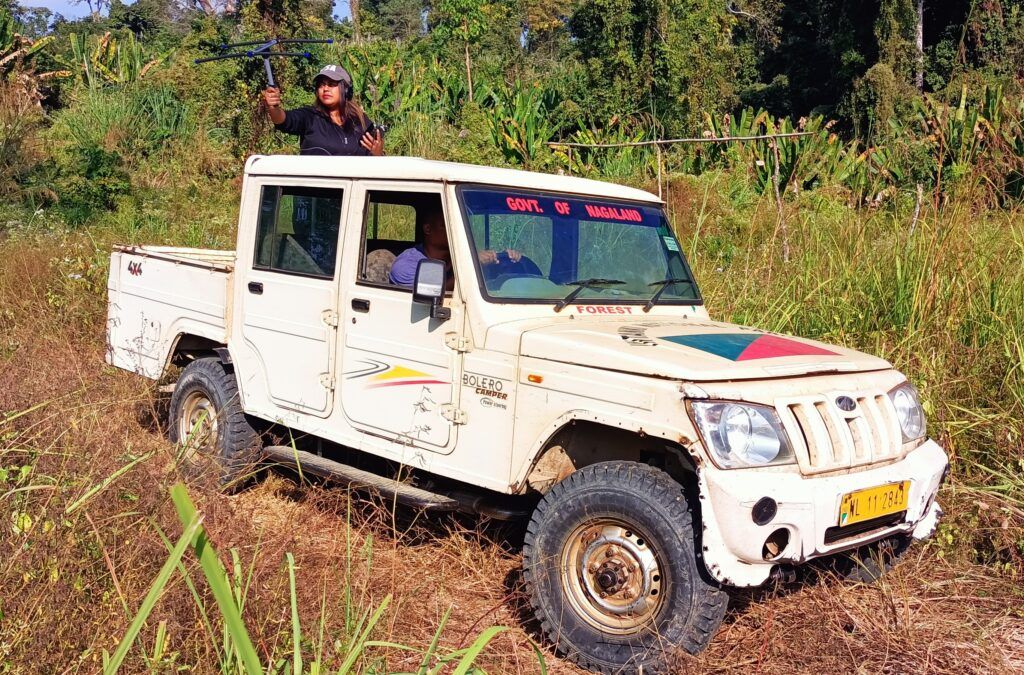
How to track a tortoise
When the tortoises are first released they are let free in a ‘soft enclosure’. This is a fenced area in the forest constructed using locally sourced bamboo to hold the tortoises for the first three months so they can aclimatise to their new habitat. The project team was stationed at the enclosure to continuously monitor the tortoises to see how they coped in their new environment. I made attempts to maintain the ambient temperature of the soft enclosure and provide warmth to the tortoises by lighting fires in portable heaters and placing them around the enclosure during cold or rainy days. After the first three months the fence was removed and the tortoises were able to roam free throughout the jungle. The team and I started tracking around the edge of the enclosure because to begin with they did not seem to move around much. We conducted one field trip every week during this period to check on them regularly. Up until May 2023, most of the tortoises were within 500 metres of the soft release enclosure.
In the most recent survey season, I mapped a search area of 50 hectares around the release site and conducted an extensive search from November 2023 till January 2024. The team also searched nearby low-lying streams and grasslands by the river where there is plenty of preferred food plants of Asian giant tortoises. Having learnt from the captive tortoises at Nagaland Zoological Park and observing the tortoises in the soft release enclosure, I was able to identify spots where they had been basking, foraging and resting.
Apart from following signals on the radio receiver, I mostly look for trails including nibble marks on the leaves growing just above the forest floor, like those I observed when they were feeding in the soft enclosure. I also look for claw markings on tree roots just above the forest floor, bite marks on fallen fruits (particularly bright coloured fruits) and depression marks in grassland areas, suggesting a tortoise had created a trail. I focus my search in favourite hide out spots like puddles and feeding grounds that the tortoises were using during the first three months of release.
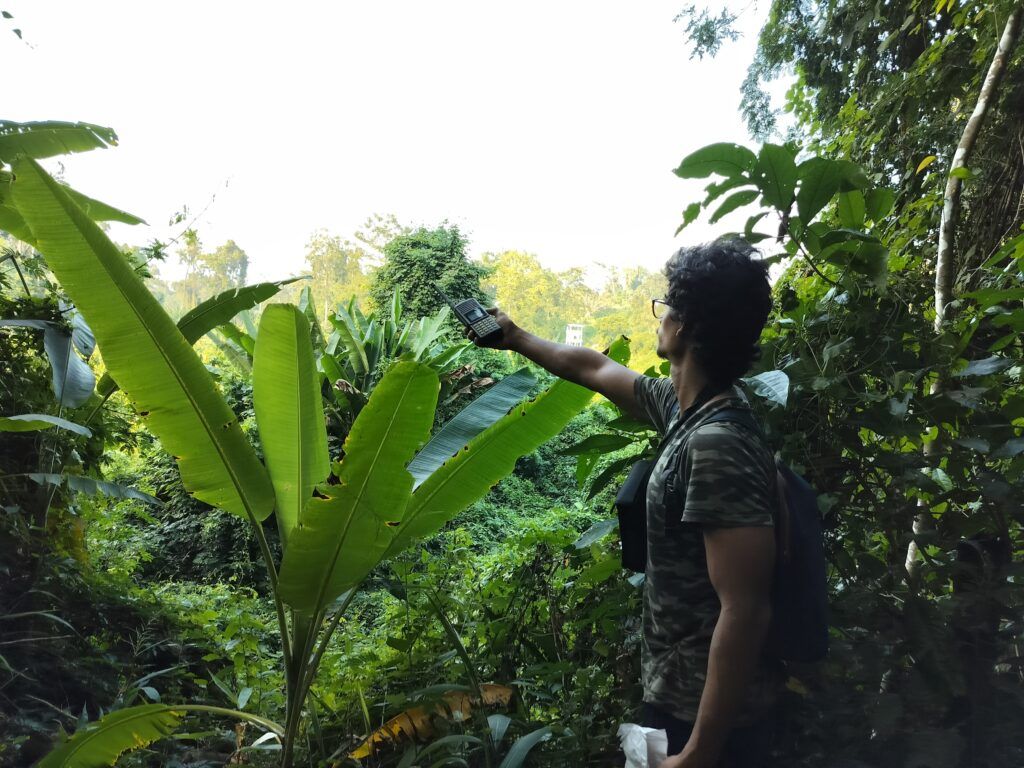
Navigating a jungle
The forest is a thick and dense with vegetation, with a canopy cover of almost 70-80% in the hills meaning it can be quite dark and shaded. It is very hard to get through the thickets and tall bushes during tracking, and sometimes the steep terrain also makes it difficult to climb and search for tortoises at the same time! We can only conduct tracking on foot between 8am-4pm during the tortoises active hours of the day. While they were inside the soft release enclosure, two local field assistants and I monitored them during the night deterring wild elephants who could break the enclosure. The site is completely inaccessible during monsoons as the river floods and due to lack of a proper bridge we can’t cross it. Winters are quite comfortable to work in – the temperature ranges between 10-40⁰C in the area, with an extremely chilly to a very hot and humid climate – but the winter, when we carried out the latest field work, is a manageable 4-24⁰C.
One of the biggest challenges in the field is the logistics. The Intanki river floods during the monsoons, and several big trees fall on the 10 km stretch of road from the staff camp to Misapdisa watch tower and the road is full of pits and trenches. It is really hard for us to conduct fieldwork, as we can only drive half way and have to walk from there through the bushes with all the supplies. There are only two forest field vehicles we can use to access the release site, so if they break down, the mechanic has to come down from Dimapur to fix it, and we have to re arrange our fieldwork.
The entire National Park is an elephant corridor, so we have to be very cautious, especially at night, as elephants can be dangerous. In the second week of January 2023, an unfortunate incident occurred where a herd of wild elephants walked through the soft enclosure and led to the casualty of two released tortoises.
There is also significant movement of fringe communities in the area. In March 2023, the area around Misapdisa watch tower was surrounded by fire while my research and I were camping there, which was probably set by a hunter in order to attract prey. The forest department staff had to come and rescue us. There can also be fighting in the jungle which poses an even greater threat to the team and we have to follow procedures to keep out of harm. Last but not the least, there is no electricity, barely any cell phone reception and no restroom facilities at the site which makes long stays more challenging, especially during rainy days and in cases of medical emergencies.
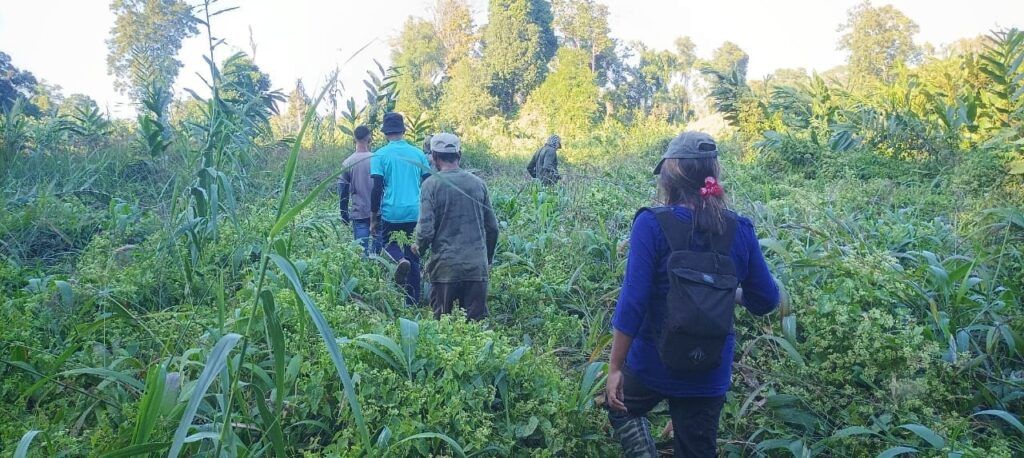
Immersed in nature
The best thing about working in the field is getting to experience nature up close. Intanki National Park is a pristine forest landscape, where you can see thousands of Amur falcons roosting and western hoolock gibbons howling when you get up in the morning. Asiatic elephants walking past your camp without posing any threat, hearing trumpets of their groups in the neighbouring banana garden while you’re having dinner under a thatched shed, and being stunned by the rattling sound of porcupine spikes at night. The Intanki river is so clean during the winters that we can drink from it. I have seen two other species of freshwater turtles in the park. The fact that Intanki houses one of the last populations of Asia’s largest tortoise in India is amazing in itself.
Moreover, getting to work with the local communities and hearing their stories about how they interacted with the Asian giant tortoises when they were abundant 50 years ago is really special. We hear how the tortoises rolled off the hills into shallow streams, and chewed on bamboo shoots, their favourite food. They also tell us about the value of the tortoises in their culture, like hanging turtle/tortoise shells in their homes to bring good luck and ward off evil, and using grinded shell for medicinal use (of course no longer encouraged now they are so endangered). Working in the field with passionate people from the forest department and local volunteers is a great pleasure, especially when you find you share similar interests in protecting this incredible jungle.
How it went
During the soft release in December 2022, we observed the tortoises dietary and habitat preferences, and recorded which wild plants the tortoises started to forage upon.
During my pre-monsoon tracking from February-May 2023, I recorded 6 tortoises and we gathered valuable data on their foraging areas and trails. With the onset of heavy monsoons, the tracking had to be halted as the release site became inaccessible. I was in constant contact with the National Park staff, and they informed me that the forest route could not be accessed given the heavy rain and fallen big trees and logs across the track.
After reopening of the park in November 2023, the soft release enclosure was partially intact and all of the tortoises had dispersed. I got a faint signal from one of the tortoises but could not physically track it down. We did not find any dropped transmitters in the entire four hectare search area and we did not record any tortoises directly. However we did find signs of the tortoises in the area, such as nibbled leaves of their favourite food plants.
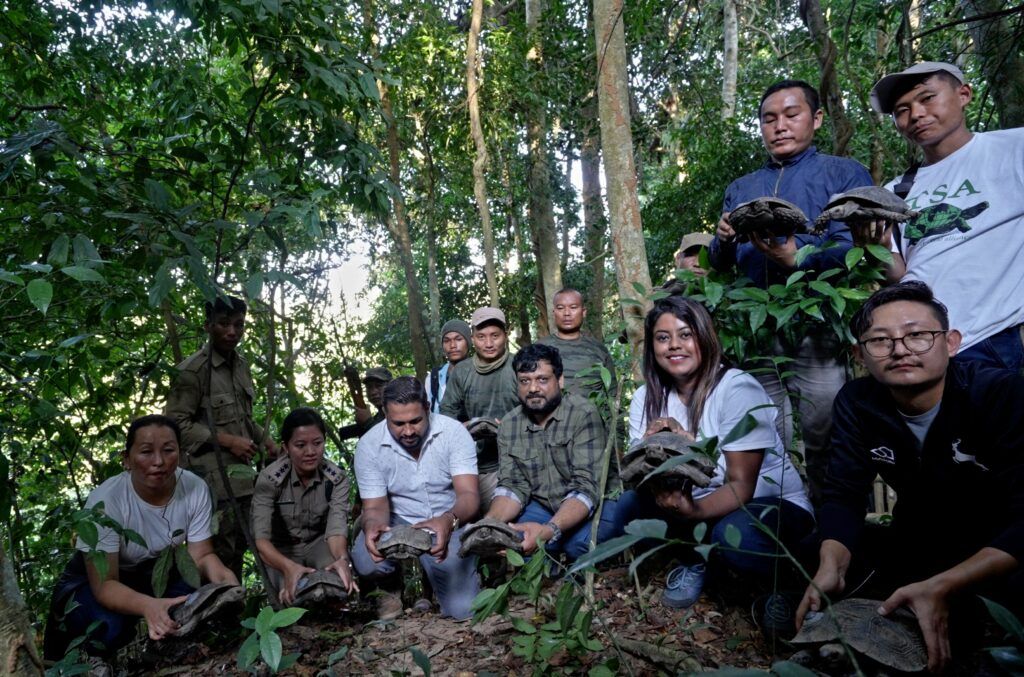
Next steps for Asian giant tortoises
Going forward, another site in the middle range of Wokha district, Nagaland is being considered as a potential release site. My research on this stretch of forest suggests it is a good location for another reintroduction site as it has lots of suitable tortoise habitat. However, a more detailed assessment is going to be conducted at the site later this year. After two long years of outreach with the local communities in the ten fringe villages with the help of Johnny Tep from Nagaland Forest Department, I was able to reach a common ground with the tribal communities to propose the formation of a Community Conservation Reserve under their leadership. I am looking forward to getting this new release site set up, culminating in the release of 15-20 more radio tagged tortoises in early 2025.
Moreover, I am planning scientific studies to understand the genetic relatedness of the satellite populations of Asian giant tortoises in northeast India, which can guide future captive breeding programs to avoid inbreeding and increase genetic diversity in the animals for release.
If you want to know more about the Asian Giant Tortoise release project please visit our project page.

